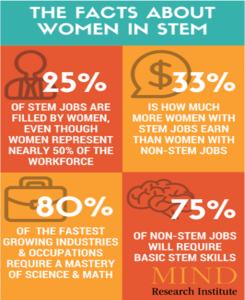Why do Women Quit STEM Jobs?
Okay, not all women quit STEM jobs. However, a new study finds that the percentage of women in federal STEM jobs remains unchanged since 2005—and during that 18 years, STEM efforts and education dramatically increased. Research from the University of Georgia indicates that not only are women underrepresented in STEM fields (federal jobs), but they also quit those jobs at a disproportionately high rate.
Researchers believe more women in supervisory positions will make a difference in women’s STEM employment levels. According to Edward Kellough, lead author of the study and a professor at UGA’s School of Public and International Affairs. “…one way to help improve the representation of women in STEM jobs is to increase their presence amongst STEM supervisors in those organizations.”
The study is the first to examine departmental and agency variation in female employment in U.S. federal STEM jobs. The team considered workers at all 15 Cabinet-level departments in the federal government and two agencies with substantial STEM employment: NASA and the Environmental Protection Agency, looking at numbers from 2005 to 2018. Researchers also separated the Air Force, Army, and Navy from the remainder of the Department of Defense to see if there were differences across military branches.
Findings include:
- Women in the Air Force, Army, Navy, Departments of Energy and Transportation, and NASA held fewer than 25% of STEM jobs
- Women account for less than 30% of STEM jobs in the departments of Veterans Affairs, State, Interior, Homeland Security, Defense, and Commerce
- Since 2005, women’s employment in STEM jobs increased only a fraction of 1 percentage point
- In agencies where more women are in supervisory roles and support for diversity is stronger, female STEM employees hover around 42%
- The quit rate varied widely depending on the agency—women comprise only 37.9% of STEM employees in the EPA, but more than half of the agency’s female employees quit those jobs
- A possible contributing factor could be that agencies employ women in their 20s
- Young women are not finding supportive role models
So far, progress in dealing with the problem is excruciatingly slow. The study was published in the journal Public Personnel Management.


